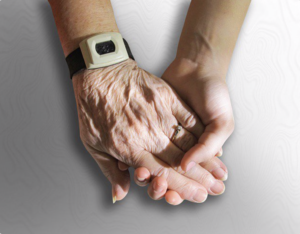Roberta Heale, Associate Editor, EBN @robertaheale @EBNursingBMJ
The global trend in the developed world is an aging population. Their care becomes more complex and “older persons accumulate chronic illness as they age”(1). Along with the aging comes higher use of the healthcare system, including increased contact with nurses and nurse practitioners(2).Multimorbidity, frailty, geriatric syndrome added to higher risk of reduced economic status and reduced family supports, demonstrate the com plexity and urgency of addressing issues related to aging (1).
plexity and urgency of addressing issues related to aging (1).
Common to all areas with an aging population is the need to address the complex care issues in order to maintain quality of life for older people and decrease the burden on individuals, families and the health care system (3). “Health and social care to provide for the complex needs of older persons with disabilities can improve the well-being of these individuals and their families in a cost-effective manner. The challenge then becomes how to translate these objectives and interventions into a coherent system of health and social service in the context of limited resources.”(3).
Care of older people is complicated by a number of geriatric syndromes, a term used to describe clinical presentations of older people that don’t fit into a discrete disease category (4). These syndromes include such things as delirium, falls, incontinence and frailty. Geriatric syndromes are diverse, but share common characteristics. There is a high prevalence of geriatric syndromes in frail elderly people. These syndromes have a multifactorial presentation, often including multiple organ systems. There is typically a significant negative impact on quality of life, increased morbidity and poor outcomes (4).
Programs directed to addressing geriatric syndromes have been associated with longer independence for elderly people. It is estimated that delaying the onset of disability or dependence of an older person by only one or 2 years can significantly reduce the subsequent needs for LTC and institutional resources (3). Since the changes in health and level of frailty and disability is dynamic, services for elderly people should target the most essential features to mitigate the potential negative outcomes related to chronic disease and disability (3).
One common geriatric syndrome is falls. The causes of falls multifactorial and usually the end result of a wide range of issues. Assessment of a risk for falls may lead to a number of interventions that will potentially mitigate the development of other geriatric syndromes. For example, some medications may result in falls, so a medication review is included in an assessment for falls. However, a medication review may also lead to the deprescribing or the substitution of unnecessary or potentially harmful medications (such as benzodiazpines), which also have a negative impact on other health issues of the elderly person (5)
Nurses are in a unique position to visit people in their homes and develop individualized care plans based on common health factors such as medication management, mobility and balance challenges, chronic pain, urinary incontinence, hearing loss, visual impairment, weight loss or malnutrition, depression, dementia, and caregiver burden and burnout (5). This work requires expert knowledge and skill. For example, fall assessment for seniors living at home includes the following: (5)
- assessment for osteoporosis: bone density testing and treatment
- participation in exercise program
- cognitive assessment: treatment started if required
- vision assessment: refer for removal of cataracts
- home adaptations
- assessment for urinary incontinence and nocturia
- nutritional assessment: review of need for vitamin D and calcium
- alcohol consumption assessment
- medication review: deprescribing of benzodiazapines and mitigation of negative effect of polypharmacy
- cardiac assessment: potential for pace maker
- depression
- foot pathology
A systematic approach to falls assessment in the elderly and treatment of each issues that is identified, goes a long way to maintaining people in their homes for as long as possible.
REFERENCES
- Clarke, J. (2012). North East Specialized Geriatric Services CPDM Forum presentation. North East LHIN archives. file:///Users/robertaheale/Downloads/c315ff504d234e659294f4b5293a6cb31.pdf
- Cuddy, J. (December 1, 2014). Is northern Ontario’s population aging, or is it just getting less young? Northern Policy Institute.https://www.northernpolicy.ca/article/is-northern-ontario%E2%80%99s-population-aging-or-is-it-just-getting-less-young-286.asp
- Bergman, H., Karunananthan, S., Robledo, L. M. G., Brodsky, J., Chan, P., Cheung, M. & Bovet, P. (2013). Understanding and meeting the needs of the older population: A global challenge. Canadian Geriatrics Journal, 16(2). https://cgjonline.ca/index.php/cgj/rt/printerFriendly/60/126
- Inouye, S.K., Studenski, S., Tinetti, M. E., Kuchel, G. A. (2007). Geriatric Syndromes: Clinical, Research and Policy Implications of a Core Geriatric Concept. J Am Geriatr Soc., 55(5): 780–791. https://www.ncbi.nlm.nih.gov/pmc/articles/PMC2409147/pdf/nihms46888.pdf
- Gagnon, C. & Lafrance, M. (2014). Falls prevention Among Seniors Living at home: Preliminary recommendations for clinical practice guidelines. https://www.inspq.qc.ca/sites/default/files/publications/1804_falls_preve_among_seniors.pdf